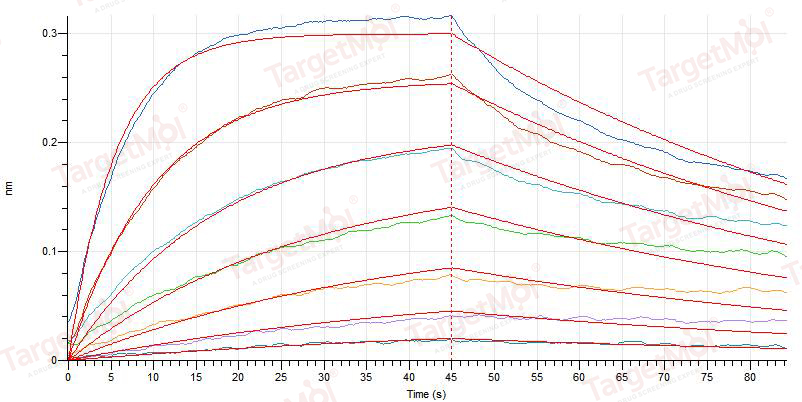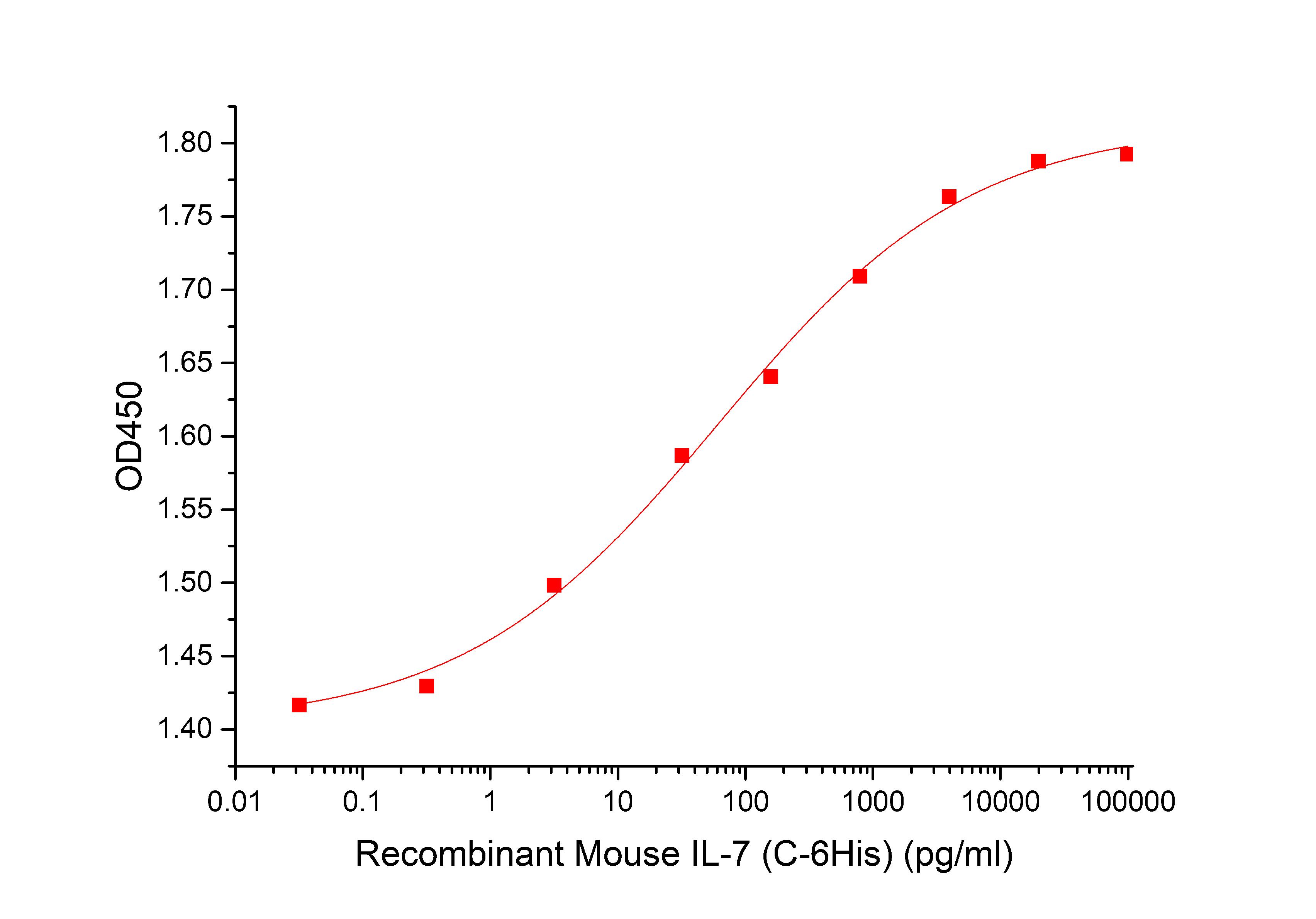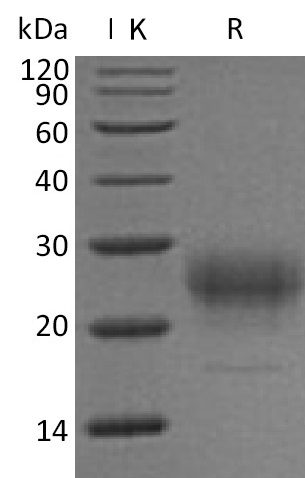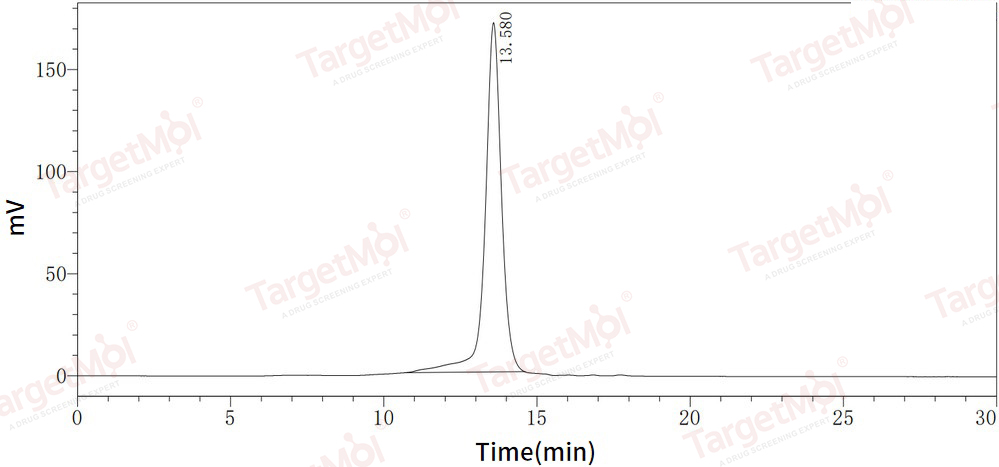- 全部删除
 您的购物车当前为空
您的购物车当前为空
IL-7 Protein, Mouse, Recombinant (His)
Mouse interleukin-7(IL-7) is the member of hemopoietin family which is important to the differentiation, proliferation, and survival of lymphocyte. Mouse IL-7 shares approximately 88% aa sequence identity with rat IL-7 and 58-60% with human, equine, bovine, ovine, porcine, feline and canine IL-7. It is widely expressed in primary and secondary lymphoid tissues cell and stromal epithelial cells of the thymus, bone marrow, and intestines. IL-7 activation of IL-7 R alpha is critical for both T cell and B cell lineage development. It is important for proliferation during certain stages of B-cell maturation. IL-7 contributes to the maintenance of all naïve and memory T cells, mainly by promoting expression of the anti-apoptotic protein Bcl-2. It is required for optimal T cell-dendritic cell interaction.

IL-7 Protein, Mouse, Recombinant (His)
| 规格 | 价格 | 库存 | 数量 |
|---|---|---|---|
| 10 μg | ¥ 1,170 | 现货 | |
| 50 μg | ¥ 3,470 | 5日内发货 | |
| 500 μg | ¥ 12,100 | 5日内发货 | |
| 1 mg | ¥ 18,900 | 5日内发货 |
产品信息
| 生物活性 | 1. Loaded Mouse IL-7RA-Fc on Protein A Biosensor, can bind Mouse IL-7-His with an affinity constant of 18.9 nM as determined in BLI assay. (Regularly tested)
2. Measured in a cell proliferation assay using PHA-activated human peripheral blood lymphocytes (PBL). The ED50 for this effect is 60-1000 pg/ml. (QC verified)   |
| 产品描述 | Mouse interleukin-7(IL-7) is the member of hemopoietin family which is important to the differentiation, proliferation, and survival of lymphocyte. Mouse IL-7 shares approximately 88% aa sequence identity with rat IL-7 and 58-60% with human, equine, bovine, ovine, porcine, feline and canine IL-7. It is widely expressed in primary and secondary lymphoid tissues cell and stromal epithelial cells of the thymus, bone marrow, and intestines. IL-7 activation of IL-7 R alpha is critical for both T cell and B cell lineage development. It is important for proliferation during certain stages of B-cell maturation. IL-7 contributes to the maintenance of all naïve and memory T cells, mainly by promoting expression of the anti-apoptotic protein Bcl-2. It is required for optimal T cell-dendritic cell interaction. |
| 种属 | Mouse |
| 表达系统 | HEK293 Cells |
| 标签 | C-6xHis |
| 蛋白编号 | P10168 |
| 别名 | 白细胞介素,白介素,PBGF,Lymphopoietin -1,interleukin-7,IL-7 interleukin-7,IL-7 |
| 氨基酸序列 | Glu26-Ile154 |
| 蛋白构建 | Glu26-Ile154 |
| 蛋白纯度 | Greater than 95% as determined by reducing SDS-PAGE. Greater than 95% as determined by SEC-HPLC.   |
| 分子量 | 22-28 KDa (reducing condition) |
| 内毒素 | < 0.1 ng/µg (1 EU/µg) as determined by LAL test. |
| 缓冲液 | Lyophilized from a solution filtered through a 0.22 μm filter, containing PBS, pH 7.4. |
| 复溶方法 | Reconstitute the lyophilized protein in distilled water. The product concentration should not be less than 100 μg/ml. Before opening, centrifuge the tube to collect powder at the bottom. After adding the reconstitution buffer, avoid vortexing or pipetting for mixing. |
| 存储 | Lyophilized powders can be stably stored for over 12 months, while liquid products can be stored for 6-12 months at -80°C. For reconstituted protein solutions, the solution can be stored at -20°C to -80°C for at least 3 months. Please avoid multiple freeze-thaw cycles and store products in aliquots. |
| 运输方式 | In general, Lyophilized powders are shipping with blue ice. Solutions are shipping with dry ice. |
| 研究背景 | Mouse interleukin-7(IL-7) is the member of hemopoietin family which is important to the differentiation, proliferation, and survival of lymphocyte. Mouse IL-7 shares approximately 88% aa sequence identity with rat IL-7 and 58-60% with human, equine, bovine, ovine, porcine, feline and canine IL-7. It is widely expressed in primary and secondary lymphoid tissues cell and stromal epithelial cells of the thymus, bone marrow, and intestines. IL-7 activation of IL-7 R alpha is critical for both T cell and B cell lineage development. It is important for proliferation during certain stages of B-cell maturation. IL-7 contributes to the maintenance of all naïve and memory T cells, mainly by promoting expression of the anti-apoptotic protein Bcl-2. It is required for optimal T cell-dendritic cell interaction. |




